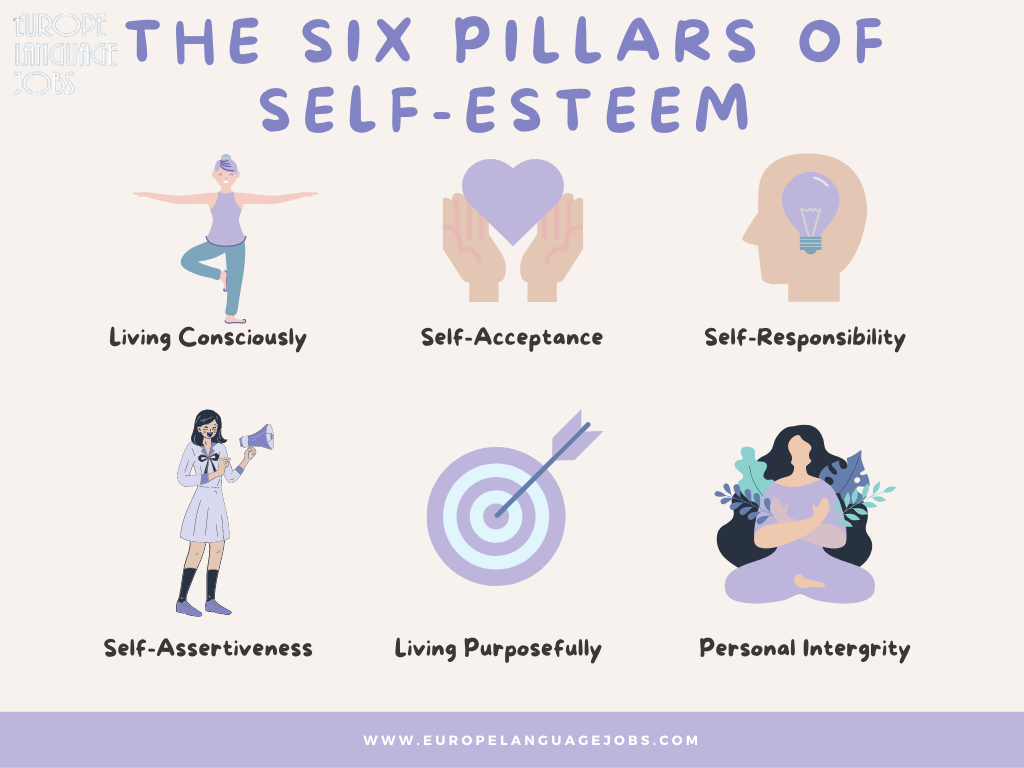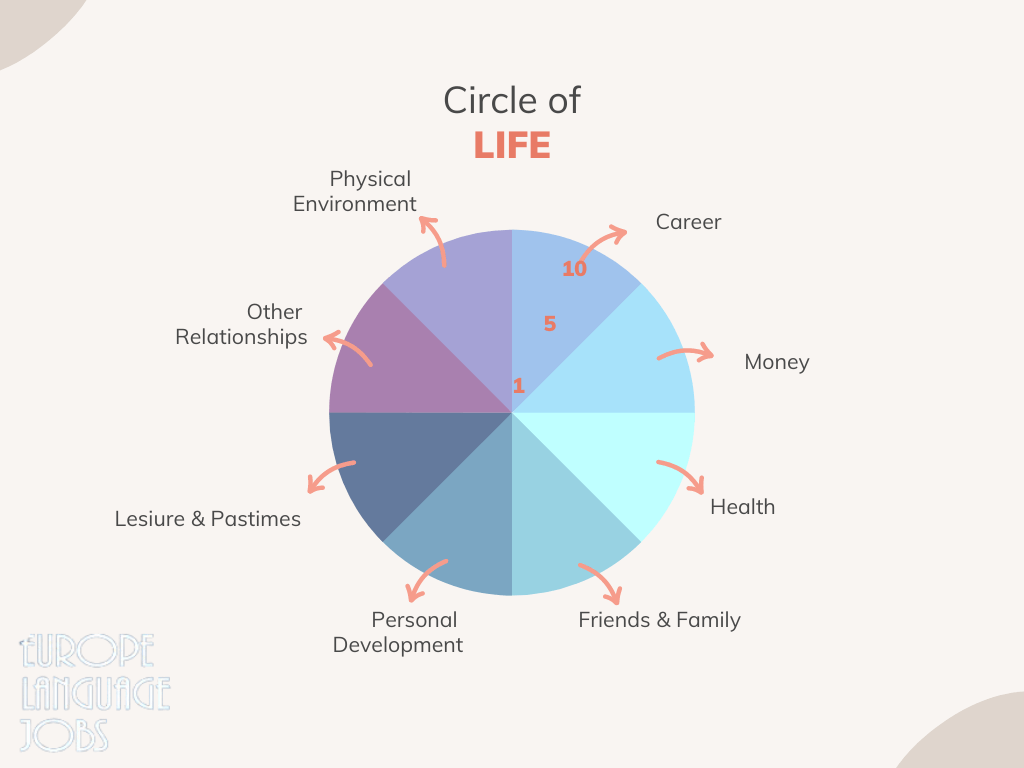Each year, we want to know more about the ways people function. Medicine develops at the speed of light so that we can prevent and treat all kinds of diseases. It’s worth noting that it’s not just the physical health that makes up a person – it’s their mental wellbeing as well. Our relations with ourselves are key. Nobody is capable of functioning properly in a way that would fully satisfy them if they don’t feel well, and if their self-esteem is faulty or – even worse – almost non-existent. Positive psychology is there to help us take care of ourselves in this aspect.
1. Positive psychology
„Positive psychology focuses mostly on the notion that people are productive and creative, that they enjoy life and successfully deal with trouble”.[1] Introduced in the ’90s, this branch of psychology is a relatively new train of thought. It leans away from “repairing a person” and focuses more on our resources and the benefits of life. Born in the United States, it enjoys a very dynamic development. An increasingly high amount of research and scientific works discussing this topic is published every year.[2]
Positive psychology tries to answer the question of how a person can depend on themselves while solving difficulties and tasks. Even though this notion is relatively new, it has gained many followers and the support of all sorts of media. Due to this growing support, we can predict that it’s going to increase in popularity every year. Researchers, scientists, psychologists, and students involved in this domain are working on developing a teaching programme and the possibility to organise different forms of training.[3]
Martin Seligman, the creator of positive psychology, believes that it’s this train of thought that focuses on what makes life worth living. By understanding how human strength works, we can increase it, and steer our lives in the direction of happiness and prosperity. [4] In order to be happy, one must get to know themselves and understand the connected values.
2. What is self-esteem?
„William James (1890) defined self-esteem as self-confidence resulting from the ratio of our actual achievements to our aspirations. By aspirations, he meant predicting the potential successes informed by our goals, values and objectives.” [5]
This approach juxtaposes our perception of who we are with who we’d like to be. Building self-esteem, we need to take into consideration all kinds of judgement based on environments such as school, peers, workplace, or family. How we estimate our self-esteem greatly depends on how we operate in areas of life that are important to us. Wanting to define our own self-esteem, we can use the following questions to guide us:
- What is my value?
- What makes me who I am?
- How important am I to myself?
- What does it say about me?
- What am I like?
- What do I deserve?
- What is important to me?
Some researchers believe that high self-esteem goes hand in hand with a prosperous lifestyle, according to the thought that being happy with who we are is a key component of being content with our lives.[6]
In today’s world, we take care of our self-esteem by investing in intellectual development and in growing as a person. We attend training, sign up for language courses, and increase our qualifications more often. Attending the gym and being mindful of our diet also impacts our self-esteem. Physical health and fitness play a huge role in the process. We also want to look better, which is why we invest in cosmetic treatments. We try to nurture our interpersonal relations by meeting with friends and exchanging points of view. We take care to read a meaningful book or go out to the cinema or the theatre from time to time. Our worth is expressed in what we have invested in ourselves. According to experts, this kind of development and investing in high self-esteem is essential.[7]
An often overlooked yet crucial aspect of self-improvement is nutrition. Following registered dietitians’ advice can help create a balanced diet that fuels both physical and mental well-being, reinforcing a strong foundation for confidence and self-care.
We feel good with who we are by raising the existential bar. The more we can do and the harder we try – and the more we achieve our goals – the higher our self-esteem. The sense of safety in interpersonal relations is the most important benefit for people with high self-esteem. They feel accepted, like “a part of an organism” that is a community. It reduces the stress resulting from the fear of rejection and alienation.
According to the empirical concept of Terror Management Theory developed by Pyszczynski, Greenberg, and Solomon in 2004, high self-esteem lowers the primitive and natural fear of dying that is common for all people. Such people feel stronger and symbolically “immortal”.[8]
3. Building self-esteem
In the psychological literature, we can encounter synonyms of self-esteem such as: self-assessment, self-image, sense of worth. Self-esteem is a key aspect of shaping personality. In order for it to be wholesome, one must focus on building it in the correct way.
It is a matter of 3 aspects:
· Intellectual – What am I like? Beliefs about ourselves, evaluation of traits and behaviours.
· Emotional – Do I like myself? Feelings and emotions directed at ourselves.
· Behavioural – Why am I doing this? Behaviours directed at ourselves, as well as others.
Nathaniel Branden created The Six Pillars of Self-Esteem:
I – The Practice of Living Consciously
II – The Practice of Self-Acceptance
III – The Practice of Self-Responsibility
IV – The Practice of Self-Assertiveness
V – The Practice of Living Purposefully
VI – The Practice of Personal Integrity[9]

Each of the aforementioned practices helps in creating an entity in building self-esteem. We must also realise that it’s us who shape it and who are responsible for it.
4. Methods to measure self-esteem
Inventories and questionnaires are useful in estimating the level of our self-esteem. The Multidimensional Self-Esteem Inventory (MSEI) developed by O’Brien and Epstein in 1988 is the most popular one. “It delivers the results of global self-esteem, competence, the sense of being loved and liked, self-power, self-control, moral approval, physical appearance, functioning of the body, integration of personality and defensive increase of self-esteem”.[10]
„The inventory serves to estimate self-esteem. It consists of 11 scales - 9 of them refer directly to self-esteem, its general level and other components referring to more detailed aspects of the way people function, such as: competence, being loved, popularity, leadership skills, self-control, moral self-acceptance, physical attractiveness, and vitality.
What’s more, it includes a scale for estimating the consistency of self-image proving the effectiveness of the process of getting to know ourselves, as well as a scale allowing us to estimate how much we need social approval. The inventory consists of 116 tests that require responding according to a five-level scale”.[11]
Rosenberg’s Self-Esteem Scale is a tool allowing to directly estimate the level of self-esteem – positive or negative in regard to Me. It consists of 10 diagnostic statements. The task of the person examined is to state how much they agree with each of the statements according to a four-level scale.[12].
Coaching exercises and tools selected by me can result helpful in building self-esteem.
5. Circle of Life
It applies the scale of 1 to 10. The closer to the centre of the circle, the higher the level of satisfaction. Our self-esteem depends on how happy we are with eight different spheres of life: career, money, health, relations with family and friends, other relationships, self-development, entertainment, physical environment. Focusing on building self-esteem, we need to take into consideration everything we can control, separating it from all that’s outside of our reach. A session with a professional coach can prove useful – or, if we demonstrate an exceptionally high level of self-awareness, we can try self-coaching: “a method of development based on applying coaching tools to yourself, without the support of a third party”.[13]

6. Clifton Strengths Finder
According to positive psychology, by being aware of our talents, we can improve what’s good about ourselves rather than focus on what we don’t succeed in. This is a unique tool aimed at diagnosing talents and strengths, meant to help us get to know ourselves and the ways we behave better. Investing in talents will help us turn them into strengths and, as a result, act successfully and achieve more. The examination allows to identify 5 dominant talents or discover all 34 in order from the strongest to the least developed one.
This test can be done here, after fulfilling a payment. The duration is around 50 minutes. It consists of 177 questions; there is a time limit of 20 seconds per question.
7. Twenty Statement Test
This tool requires us to write down 20 statements about ourselves. In order to build self-esteem according to the assumptions of positive psychology, we should focus on good or neutral statements. It is important not to mention any negative aspects. This test can be done without assistance, using just a pen and a piece of paper. It will help us understand the way in which we perceive ourselves. By writing down this many positive statements, we will think about ourselves in a less negative way. It will be the perfect time for self-reflection and increasing self-awareness.
This tool was developed by M.Kuhn and T. McPartland and taken from psychology, it served to examine the concept of self.[14] The description can include aspects such as social roles (gender, nationality, family), career status, personal views and beliefs, ambitions, goals, descriptions (appearance, body type), metaphors, interests and hobbies.
Self-esteem is relatively stable over time. It reaches its peak in early childhood. It drops slightly during school years, depending on how much we compare ourselves to others and the amount of information reaching us, for example, provided by our teachers. It should grow again during puberty, unless we don’t accept ourselves the way we are or have high expectations in regard to others. An increase in self-esteem can occur in key moments in our lives, such as obtaining a degree, making marriage vows, the birth of a child or a change of address.[15]
Reaching a new psychological limit and realising that “we managed it”, our self-esteem gets stronger. People with high self-esteem are more resistant to external criticism – they are also interested in improving both appearance and personality-wise and want to stand out. They focus on self-development and fulfilling their goals. They do not only wish to avoid failure – they want to succeed fully. They know that they are going to make it, and they don’t get overwhelmed by life.
About the Author: Klaudia MatuszyÅska is a young, motivated Career Coach from Poland. She adopts a personal approach to each of her clients, proposing tailored coaching tools that maximise the results of her sessions. To quote the Coach herself: “I don’t motivate. I support”. Get to know more about her activity and get in touch with her on her Instagram profile!

Feeling inspired? Visit our blog for more career advice! How can you be sure the information we provide is top-notch? We are a group of professionals working with recruiters, career coaches, and HR specialists from all over the world!
Trust our experience and let us help you find a new job in Europe!
[1]E. TrzebiÅska, Psychologia pozytywna, Wydawnictwa akademickie i profesjonalne, Warszawa 2008, s.9.
[2] A. Carr, Psychologia pozytywna. Nauka o szczÄÅciu i ludzkich siÅach, Zysk i S-SKA Wydawnictwo, tÅ. Z. A. Królicki, PoznaÅ 2009, s 13
[3] E. TrzebiÅska, Psychologia pozytywna, Wydawnictwa akademickie i profesjonalne, Warszawa 2008, s.10.
[4] Ibidem, s.15.
[5] A. Carr, Psychologia pozytywna. Nauka o szczÄÅciu i ludzkich siÅach, Zysk i S-SKA Wydawnictwo, tÅ. Z. A. Królicki, PoznaÅ 2009, s. 226
[6] E, TrzebiÅska, Psychologia pozytywna, Wydawnictwa akademickie i profesjonalne, Warszawa 2008, s. 100
[7] Ibidem, s.100
[8] Ibidem s.101
[9] N. Branden, SzeÅÄ filarów poczucia wÅasnej wartoÅci, wyd. JK, tÅ. Hanna DÄ browska, Warszawa 2008, s. 20
[10] A. Carr, Psychologia pozytywna. Nauka o szczÄÅciu i ludzkich siÅach, Zysk i S-SKA Wydawnictwo, tÅ. Z. A. Królicki, PoznaÅ 2009, s.226-227
[11] https://www.practest.com.pl/msei-wielowymiarowy-kwestionariusz-samooceny-msei [19.12.2019]
[12] https://www.practest.com.pl/ses-skala-samooceny-rosenberga [19.12.2019]
[13] http://encyklopediacoachingu.pl/haslo427 [18.12.2019]
[14] Å.T. Marciniak, S. Rogala – Marciniak , Coaching zbiór narzÄdzi wspierania rozwoju,
wyd. Wolters Kluwer, Warszawa 2012 s.339.
[15] A. Carr, Psychologia pozytywna. Nauka o szczÄÅciu i ludzkich siÅach, Zysk i S-SKA Wydawnictwo, tÅ. Z. A. Królicki, PoznaÅ 2009, s. 229.


















Ward Van De Velde1y ago
Thank you for sharing.
Thank you for sharing.